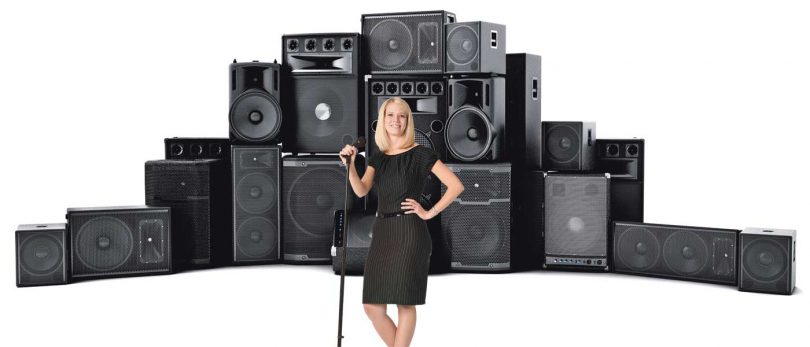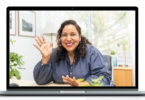Sound Like a Winner: Create a podcast to broaden your audience and expand your business
By Phil Malkinson
Are you interested in starting your own podcast? With proper planning, it’s an effective medium for establishing your expertise and gaining renown as a local expert in your field.
It’s not difficult to get up and running with a podcast, says Monica Neubauer, RRC Certified Instructor and host for the Center for REALTOR® Development podcasts, who conducted a session on “Getting Started with Podcasting” at the recent 2017 NAR REALTORS Conference & Expo. “But because podcasting is only sound and affects just one sense—hearing—the bar for creating a compelling production is higher compared to creating a video,” Neubauer says. “There are several details that go into planning and executing a successful podcast, but once you are set up to do it, it can be easy and fun, depending on the style you choose to do.”
First, ask yourself why you want to do a podcast. Perhaps you want to become known as an expert in your local area, to educate your clients or to add credibility to your business—or just because you enjoy it.
1. Start with a plan
Neubauer emphasizes the importance of having a plan for creating a podcast. Ask yourself the following questions:
• What is your goal?
• Who is your target audience?
• What is the demographic of your target listener?
• How often do you want to air new episodes of your podcast?
• What is the duration of each episode?
Tip: Find out who listens to podcasts by reading The Podcast Consumer 2017 report by Edison Research.
Now hear this
Edison Research’s report The Podcast Consumer 2017 revealed the following:
- It’s estimated that 112 million Americans have listened to a podcast at some point, and monthly podcast listeners grew to 67 million in 2017.
- Podcast listeners continue to be predominately 18–54 years old, lean slightly male and are affluent, educated consumers.
- Home is the most often named location for podcast listening (84 percent listen at home), but vehicles are a strong second-place (65 percent).
2. Vital components
Include the following elements in your plan:
• Identify a topic of broad interest to your audience.
• Plan your introduction—the first minute or so is critical.
• Determine where in the podcast you will place your guest’s bio information if you use an interview style.
• Locate a sponsor and then decide when in the podcast you will promote your sponsor.
• Determine the background music.
• Release the broadcast on a consistent schedule.
• The webpage that hosts your podcast should feature a strong design with clear branding—and it should be mobile-friendly.
Tip: Carefully consider the title of your podcast and each episode title—use keywords that will show up in search engines.
3. Episode format
“Once you decide who your audience is and what you want to say, you then need to decide on a format,” Neubauer says. Possible formats include:
• Interview
• Dialogue
• Story
• Monologue
“The monologue is just you talking, the dialogue is with a regular co-host and the interview format is you talking with other people about your topic,” Neubauer says. “And the story format is the one we all love to listen to—telling a story. This often requires more complicated editing and good planning. The format of your podcast will dictate the equipment you need for recording—will you record at home, out in the community or in a studio?”
Tip: Create an outline of the content you want to cover before each episode to help structure the podcast and minimize gaps in the broadcast. This will guide you without being too scripted.
4. Recording
The technical aspects of creating a podcast require some investment to achieve a professional outcome. Microphones, headphones and recording software are some of the necessary components. Using quality recording gear and recording in a quiet space and/or using a vocal recording shield will help create a positive listening experience for your audience.
The best content in the world can be undermined by poor execution when recording the podcast. In addition to a microphone that plugs directly into a portable recorder or the USB port of a computer, Neubauer emphasizes the importance of a solid mic stand set to the proper height, as well as a vocal shield or other pop filter for the microphone to filter out stray noises. You’ll also need to use recording software—some options include Audacity, an open-source recording and editing program, Skype with Ecamm, or GarageBand for Apple users.
Tip: Make sure voices are recorded as clearly as possible and that each voice is recorded on its own track so an editor can work on each voice separately.
5. Editing and post-production
Post-production can be time-consuming—professional-sounding results are important, so consider outsourcing this aspect. Outside services can be reasonably priced: You upload the raw audio file to the service and they send back the edited file. If you opt to edit the file yourself, use software that’s user-friendly. For example, if you record in stereo, make sure that vocal levels are similar in each channel.
Tip: Find royalty-free music for the background and intro music.
6. Show notes
Show notes provide a summary of each episode, and they typically appear under your podcast in one of the following formats:
• Narrative style (translates easily into a blog); if you record with video, you can post to YouTube
• Tweetables format (copy/paste to Twitter)
• Time/topic
Include guest info in the show notes.
Tips: The show notes create searchable content, so think about keywords.
7. Publishing/hosting
You have to host your podcast somewhere. Some post-production services will do this at an affordable cost. You’ll need the following components:
• A web URL where your podcast resides.
• A title for your podcast and each episode.
• Graphics for the webpage, including a compelling design that represents your brand for the podcast.
Tip: Your hosting company will create an RSS feed that your listeners subscribe to so they can automatically download new episodes of your podcast.
8. Budget items
Create a budget that includes equipment, hosting, production, post-production, website and
a marketing plan.
Tip: Need help covering expenses? Get local advertisers to sponsor your podcast.
In conclusion, Neubauer says: “The titles, descriptions and show notes are the key parts when listeners are searching for you or your topic. Make sure you take time to understand the best way to create and title the podcast. Also, use strategic words in the first few lines of your description or show notes as they show up with the title to draw listeners to your topic.”
It’s important to start with a plan, but the best advice from most experts is to just do it. Neubauer says: “If you love to write, do a blog. If you love to video, post to YouTube. If you love to talk, do a podcast. Jump in for six months to try it—it will be fun.”
Check out Apple’s podcast specifications, including podcast best practices, at itunespartner.apple.com/en/podcasts/overview. Also, check out a 14-step guide on starting a podcast at websitesetup.org/start-podcast. Join the Podcast Movement Group on Facebook to learn more. It is interactive. Visit facebook.com/groups/podcastmovement.








